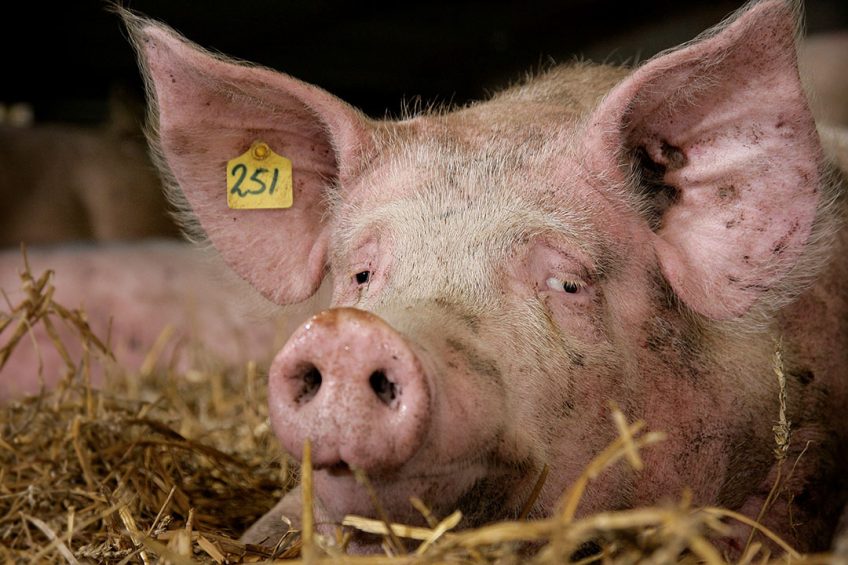ASF China: Keep calm and carry on

Quite a few market experts foresee rising prices for pigs outside Asia now African Swine Fever has been creating major problems in the Chinese swine herd. Don’t get carried away, writes market expert Dr John Strak. A situation of market shortage has happened before – the market can respond quicker than one would think.
The outbreaks of ASF in China are dominating the news cycle just now. Hardly a day goes by without another headline that suggests that bacon sandwiches and BBQ pork ribs are about to be priced off menus and away from supermarket aisles.
City analysts and industry pundits are all over the media with forecasts of huge falls in China’s pig herd and consequent hikes in demand for pork imports from western-based producers and processors. All that hype is good for stock prices and futures traders but it’s a red light for those directly involved in the industry.
USDA expects a 13% hog inventory drop
The most authoritative report on ASF in China that I have seen is by the United States Department of Agriculture (USDA)’s foreign agricultural service and it cautiously predicts a 13% decline in China’s hog inventory and a 5% decline in pork production – all producing a 33% hike in pork imports.
That last number implies a level of pork imports in 2019 that is just above the record level seen in 2016. That doesn’t sound so dramatic, does it? Moreover, in the medium to long term I don’t think the bad fortune of the Chinese will bring all the joy and super profits that are being suggested by some analysts (not the USDA).
Global pig industry reacts quickly
Why? Well, history tells us that the global pig industry has a habit of reacting to supply shocks in a way that gives with one hand and takes with the other: it’s a complicated global supply/demand model that has to be worked through.
Producers, processors and investors need to watch the developing supply and demand for pork and alternative proteins in China and the world with even more care than usual. I agree that pig and pork prices will rise much more than they were expected to in 2019 in North America and Europe – but after that improvement be prepared for an adjustment in the other direction. It could be a rapid reversal.
Remember this figure on US hog prices
In Figure 1 the daily price for US hogs is shown for the period January 1996 until April 2019. It’s the type of chart I encourage serious players in the pig industry to print out and pin up on the back of the toilet door. It is worth reflection on a daily basis.
Figure 1 – US daily hog prices, January 1996-April 2019.
Click here to enlarge the figure.
The chart illustrates the volatility of the US hog price over a long period with some notable highs and lows. One particular boom and bust for US hog prices occurred in the 1996-99 period and the circumstances then bear comparison with the situation in China and the global market for pork now. In the early 1990s the US hog industry was undergoing structural change, increasing productivity, securing economies of scale and expanding to new parts of the country.
CSF and FMD outbreaks in 1997
By 1997 the US hog inventory was around 61 million head. In early 1997, on the other sides of the Atlantic and Pacific, and unbeknown to US producers, 2 livestock diseases were identified in the Dutch and Taiwanese pig herds – Classical Swine Fever (CSF, also known as hog cholera, ed.) in the Netherlands and Foot-and-Mouth Disease (FMD) in Taiwan. Both outbreaks had a major impact on the pig herds in these countries.
In Europe, the Dutch culled around 2 million pigs (about 8% of their inventory) as part of the effort to control the disease. In Taiwan the situation was much worse and in order to control the FMD epidemic around 6 million pigs were culled which represented about 40% of the domestic pig population.

Read more pig price analyses in our World of Pigs section
What happened to pig prices?
These events had economic consequences on the price of pork and other meats – and on trade. Both countries saw their exports curtailed and, in the case of Taiwan the loss of the export market (which took 40% of its output) effectively stopped the industry in its tracks. Japan was Taiwan’s largest supplier of pork and the Japanese market was effectively opened up to new suppliers who previously had little hope of entering it. But what happened to prices?
The impact of a disease outbreak (supply shock) on livestock prices seems to be obvious. Surely prices will spike? Yes, typically, they do. And global pig and pork prices rose in 1997 in response to the market and trade disruption. But they soon fell back and in North America and Europe record low prices were seen in 1998 and 1999.
Collapse in pig prices explained
That collapse in prices was driven by a number of factors:
- a faster than expected supply response in the USA and some European countries,
- a decline in the demand for pork across the world as pork prices rose,
- a switch to alternative sources of protein by consumers everywhere.
The US daily hog price did not get back to a sustained upward trend until mid-2002. Europe’s pig prices were similarly blighted. One other feature of pork demand in Taiwan needs a mention – the demand for pork in Taiwan, and the price of pigs, fell substantially following the outbreak due to food safety concerns. There are echoes of that consumer reaction in China now. The key observation that comes out of this history lesson is that the response to a supply shock isn’t easily worked out on the back of an envelope.
China is difficult to understand as 1 country
A final note of caution is important. In economic terms China isn’t easily understood as one country – the averages can be misleading. There are substantial differences in per capita income and consumer purchasing behaviour between the urban eastern coastal population and the populations inland and in the western and northern regions. This will affect how the demand for pork and other proteins will change as a result of ASF.

Just before the ASF outbreaks, Dr John Strak analysed the giant Chinese pig industry in 3 steps with attention for the farm side, the supply chain and the consumer side
The structural changes in China’s pig sector have also highlighted regional variations and these also complicate data collection and the interpretation of how ASF will impact production and trade i.e. the supply response will be very unclear. China’s commodity markets have always been difficult to model and these outbreaks of ASF underline this feature of the pork market – neither demand nor supply is straightforward to forecast.
My views on how to deal with this complexity – keep calm and carry on. We have been here before.












